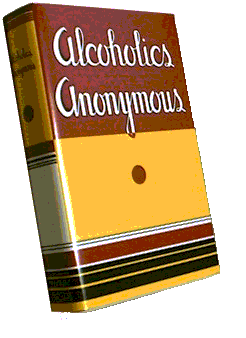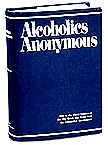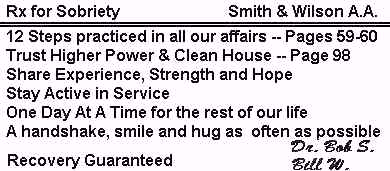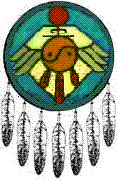

 Click The Images To Go To Page Indicated
Fitz Mayo - New York's AA #3 John Henry Fitzhugh Mayo, commonly called "Fitz" was the Big Book "Our Southern Friend." He was among the first few to get sober in New York, probably the second after Hank Parkhurst. He has been described as a 'blue blood" from Maryland. The son of an Episcopal clergyman, he attended a church school, where he became rebellious at what he thought an overdose of religious education. Fitz had a promising career as a bookkeeper with an established firm aborted by the Great Depression, then took a teaching position in Norfolk, VA, which he lost because of his drinking. Then a friend from childhood gave him part of his own farm in Cumberstone, Maryland, near Washington, D.C., to homestead. Alcoholism may have run in his mother's side of the family. Fitz said his "Mother hated liquor and feared a drunken man. Her brother had been a drinker and had died in a State Hospital for the insane." Fitz was, reportedly, quite handsome, with chiseled features. He had the quiet, easy charm of the landed gentry. Indeed, he was quite the Southern gentleman. But Fitz had been assailed by a sense of inferiority, incompetence, and unworthiness. This may have been made worse by the fact that Fitz didn't serve in the military in World War I. He had initially been turned down for being underweight. But eventually he was accepted and was to have reported for duty on November 13, 1918, but the Armistice was signed on the 11th, so he was never in the service during that war. When the needs of others in his family became overwhelming, he drank. According to the Big Book, page 56, which refers to Fitz as "a minister's son" these family problems, included business failures, insanity, a fatal illness, and a suicide. Fitz became embittered and depressed, and finally serious alcoholism, impending mental and physical collapse, brought him near to self-destruction. Then, in the fall of 1935, Fitz heard that Towns Hospital in New York was having some success in treating alcoholism, and he went there for treatment. This was just a few months after Bill Wilson's historic meeting with Dr. Bob in Akron. While he was probably Bill's second successful case, judging from his story in the Big Book there must have been others then in the hospital who had tried AA. (See page 502-3 of the Big Book, about the four alcoholics playing bridge in a smoke-filled room.) It was while he was still in the hospital that the great thought came that crowded out all else: "Who are you to say there is no God?" Lois described Fitz as an "impractical, lovable dreamer." Bill's intellectual, scholarly qualities gave him common ground with Fitz, and -- like Fitz -- Bill was also a dreamer. Lois and Bill became devoted friends of Fitz and his wife, Elizabeth. Lois said that she and Bill had "practically commuted" to Fitz's home in Maryland, and Fitz visited them as often in New York. He often came up for the Tuesday night meeting in Bill's home in Brooklyn. It was while Bill and Lois were visiting Fitz in Maryland in the summer of 1936 that Bill C., a "guest" in the Wilson home for nearly a year, committed suicide. (See page 16 of the Big Book.) And Fitz, as well as Hank Parkhurst often joined Bill and Lois at Oxford Group "house parties" before AA broke away from the Oxford Group. During the writing of the Big Book, Fitz insisted that the book should express Christian doctrines and use Biblical terms and expressions. Ruth Hock remembered that during the debate about God during the writing of the Big Book, "Fitz was for going all the way with 'God' while Bill was in the middle, and Hank was for very little." Ruth, trying to reflect the reaction of the nonalcoholic, was for "very little." The result of this debate was the compromise phrase "God as we understood Him." When the group was trying to decide on a name for the book, Fitz, because of his close proximity to Washington, was asked to go to the Library of Congress and find out how many books were called "The Way Out." Fitz reported that the Library of Congress had 25 books entitled "The Way Out, and 12 entitled "The Way." 1 There were none called "Alcoholics Anonymous." That settled the matter. Fitz's sister, Agnes, came to AA's rescue when the printer refused to release the book he was holding -- the first printing of Alcoholics Anonymous. Agnes loaned AA $1,000, the equivalent of nearly $12,000 in today's dollars. At least as early as 1937, Fitz was spending much of his time trying to get AA started in Washington. His sister worked in Washington, and Fitz lived with her during at least some of this period. At first he met with minimal success, but by the fall of 1939 the nucleus of a small group had been established in Washington. He had been long a loner in Washington, but Fitz was eventually joined by Hardin C. and Bill A. 2 and was eventually joined by Florence Rankin. It was Fitz who was called on to identify Florence's body when she died. One of Fitz's early, if not permanent successes was Jackie Williams. He sent Jackie to see his old friend Jim Burwell in Washington when Jim was just coming off a binge at his mother's home in DC. This was on January 8, 1938. Burwell tells the story in "The Vicious Cycle" (Big Book, pages 238-250). Fitz's efforts in Washington led to groups forming in Georgetown, Chevy Chase, Silver Spring, Bethesda, Rockville, and Colmar Manor in Maryland; and Arlington, Alexandria, Fairfax, and Falls Church in Virginia. (These are all suburbs of Washington, D.C.) He also developed excellent relationships with hospitals, and Fitz gained AA access to the workhouse to which drunks were sent by DC courts. In World War II, Fitz joined the Army, where he was found to be suffering from cancer. He died October 4, 1943, eight years after he stopped drinking. Fitz is buried on the grounds of Christ Episcopal Church at Owensville, MD, where his father had once been pastor. He is buried just a few feet from where his friend Jim Burwell is buried.
Notes: 2. When Bill Wilson died in 1971, Donald E. Graham, now the publisher of The Washington Post, but then a young man learning the family business from the ground up, and working as a staff writer, interviewed me. Graham's story says in part: "Bill A., an Arlington businessman, recalled that in December 1939, when Alcoholics Anonymous was a small, little-known group, he went to New York to meet Mr. Wilson. The next month Mr. Wilson helped start an AA chapter here, the fourth in the country." "He came here many times to help us with our problems," Bill A. said, and later, when the national AA organization faced a financial crisis, the Washington chapter came up with the funds to rescue it. Bill A. may have been referring to Fitz's sister's loan to AA to get the book published.
Sources: Compiled by Nancy O. Index of AA History Pages on Barefoot's Domain As in so many things, especially with we alcoholics, our History is our Greatest Asset!.. We each arrived at the doors of AA with an intensive and lengthy "History of Things That Do Not Work" .. Today, In AA and In Recovery, Our History has added an intensive and lengthy "History of Things That DO Work!!" and We will not regret the past nor wish to shut the door on it!!
KEEP COMING BACK!
On the Web July 27, 2001 in the Spirit of Cooperation Three mighty important things, Pardn'r, LOVE And PEACE and SOBRIETY |

